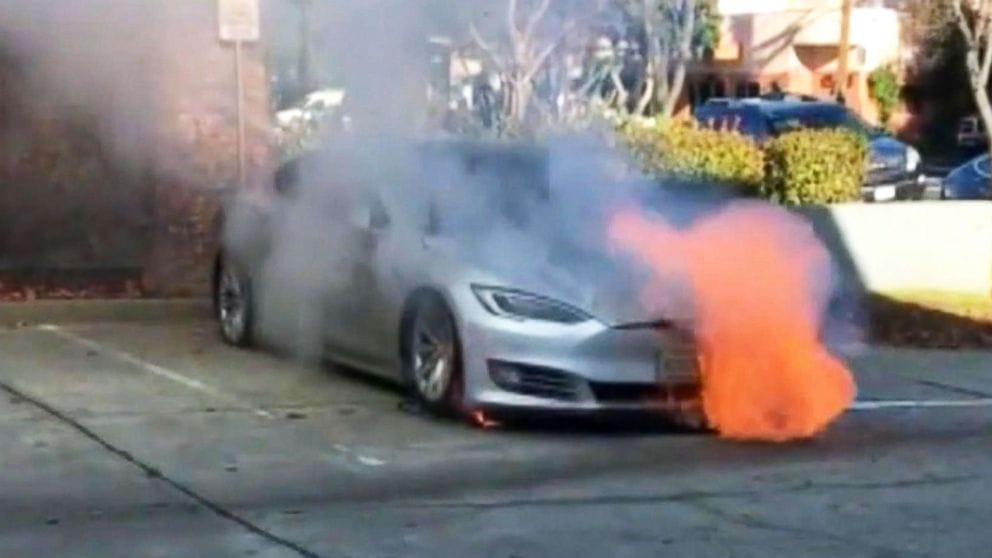Electric plane prototype caught fire
I suspect that anybody who genuinely knows detail about the cause of the accident isn't putting that knowledge in the public domain this quickly.
But, generically the major issue with Lithium battery fire risk is thermal runaway, cause by some problem of battery thermal management. That can be poor storage, physical damage, incorrect charging cycles - there are plenty of opportunities. The phone industry are reasonably mature in their understanding of that, but with the best will in the world, you can't instantly map knowledge applicable to a $10 phone battery to a $200k aeroplane battery array. There will be more accidents like this, hopefully with similar limitations to only property damage and not loss of life, as our communities develop this knowledge.
Onboard lithium fires in carry on devices, incidentally, are recommended (on the back of quite a lot of research by FAA in particular) to be handled with lots of water - so the use of large quantities of water and foam in this case, would seem entirely consistent. Other firefighting compounds are less likely to cool effectively, and the combustion process does not require external oxygen, so simply excluding air doesn't get you very far.
Most expert commentators have considered the various media releases by Eviation about progress on the Alice to be basically exaggeration and hyperbole. It will be interesting to see how those modify in the light of this.
But, generically the major issue with Lithium battery fire risk is thermal runaway, cause by some problem of battery thermal management. That can be poor storage, physical damage, incorrect charging cycles - there are plenty of opportunities. The phone industry are reasonably mature in their understanding of that, but with the best will in the world, you can't instantly map knowledge applicable to a $10 phone battery to a $200k aeroplane battery array. There will be more accidents like this, hopefully with similar limitations to only property damage and not loss of life, as our communities develop this knowledge.
Onboard lithium fires in carry on devices, incidentally, are recommended (on the back of quite a lot of research by FAA in particular) to be handled with lots of water - so the use of large quantities of water and foam in this case, would seem entirely consistent. Other firefighting compounds are less likely to cool effectively, and the combustion process does not require external oxygen, so simply excluding air doesn't get you very far.
Most expert commentators have considered the various media releases by Eviation about progress on the Alice to be basically exaggeration and hyperbole. It will be interesting to see how those modify in the light of this.
Join Date: Jul 2008
Location: Only occasionally above FL50
Age: 71
Posts: 211
Likes: 0
Received 8 Likes
on
6 Posts
I reckon the 16l of petrol carried in my self sustaining (turbo) glider would give me a total of about 20,000 feet of climb. From what I hear, electric self launchers would do about 4000’ at best. In practice they usually use another form of launching to preserve their battery for getting home when the lift runs out. At low power they will fly a fair distance - certainly enough to get to a landable field, and usually enough to get home. Electric passenger transport is a very different matter!
Join Date: Jan 2017
Location: Warwick
Posts: 197
Likes: 0
Received 0 Likes
on
0 Posts
The 25% efficiency of a 2 stroke self launcher or sustainer is very optimistic, the current crop of jet sustainers are outrageously thirsty.
Agree about electric aviation in general, maybe small recreational or training types, not passenger carrying.
Agree about electric aviation in general, maybe small recreational or training types, not passenger carrying.
OTOH, the King-Air-like Eviation specs sound very optimistic at best. These 260 Wh/kg batteries still are in the "experimental" class of performance, and they need to stuff them in a 1600 kg airframe, motors and 11 seats included.
Join Date: Nov 2005
Location: UK
Age: 78
Posts: 249
Likes: 0
Received 0 Likes
on
0 Posts
MCR01
I'm curious. 22 liters of petrol is about 16.5 kg providing about 45 MJ/kg, so about 740 MJ total energy. Assuming 25% efficiency of a piston engine, that's about 185 MJ of available energy. Lithium batteries (middle range) energy density is 0.6 MJ/kg. So, assuming 100% efficiency of the electric side, that means that to equal the energy of the petrol, one would need a battery pack weighting 185 kg. How could this possibly work? Have I made a maths error?
I'm curious. 22 liters of petrol is about 16.5 kg providing about 45 MJ/kg, so about 740 MJ total energy. Assuming 25% efficiency of a piston engine, that's about 185 MJ of available energy. Lithium batteries (middle range) energy density is 0.6 MJ/kg. So, assuming 100% efficiency of the electric side, that means that to equal the energy of the petrol, one would need a battery pack weighting 185 kg. How could this possibly work? Have I made a maths error?






